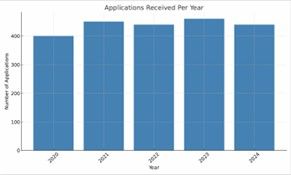Who can use the designer's name as a trademark?
After the end of collaboration, can the company still use a designer's name as a trademark ?

In the world of haute couture fashion, the designer’s name is often emblematic of the style of the garment and determines the consumer’s decision to buy. However, if the designer ceases to work with his business partner, can the latter continue to use the trademark registered under the designer’s name? A recent decision of the French Supreme Court of 28 February 2024 illustrates this question.
Jean-Charles de Castelbajac, a famous French designer, had a company under his name and owned the French trademarks JEAN-CHARLES DE CASTELBAJAC and JC de CASTELBAJAC. On 3 February 2012, due to financial difficulties, the company PMJC acquired two French trademarks “JEAN-CHARLES DE CASTELBAJAC” and “JC de CASTELBAJAC” as part of a bankruptcy procedure to acquire the designer's company. On 21 July 2011, the company entered into a service contract with the designer, in which it specifically referred to “the need to match the image of the brands and items marketed with the image of the designer”, as he had assumed the role of artistic director. At the end of the contract on 31 December 2015, the designer created the company Castelbajac Créative, through which he continued his professional and artistic activities, using his family name.
Several legal disputes arose between the parties, who attacked each other for copyright infringement and trademark infringement. On 21 June 2018, PMJC filed a lawsuit against the designer and Castelbajac Créative for alleged trademark infringement, unfair competition and parasitic behaviour. The designer, in turn, filed a counterclaim for cancellation of the two trademarks, arguing that their use had become misleading.
The Paris Court of First Instance ruled that the revocation action was admissible but dismissed the revocation claim. The Paris Court of Appeal decided that the revocation action was admissible and well-founded. The case was then appealed to the French Supreme Court.
Regarding the deceptive use of designer’s name as a ground for revocation, the Court of justice put down some guidelines in the ELIZABETH EMANUEL case on March 30, 2006. In this case, the dispute arose between a wedding dress designer in the United Kingdom and a company which had applied to register the trademark ELIZABETH EMANUEL, consisting of her surname. This trademark application followed successive transfers of the initial business.
In that case, the Court held that, although an average consumer might be tempted to buy a garment under the impression that the designer bearing the name had been involved in its creation, the company owning the trademark still guaranteed the characteristics and qualities of the garment. Consequently, the name in question, taken in isolation, was not inherently misleading as to the nature, quality or origin of the goods designated.
However, if the presentation of the mark was intended to imply the designer's ongoing involvement in the creation of the goods, this could be considered a fraudulent maneuver on the part of the applicant company. However, it wouldn't meet the criteria of deception under the Community Trade Mark Directive and therefore would not affect the validity of the mark or the possibility of its registration.
In the present Castelbajac case, the Paris Court of First Instance rejected the claim for revocation of the JC de CASTELBAJAC and JEAN-CHARLES DE CASTELBAJAC trademarks, also relying on the Elizabeth Emanuel ruling.
The Paris Court of Appeal overturned the judgment on this point and declared the partial revocation of trademark rights. It considered that the jurisprudence of the Court of Justice in no way excluded the possibility of revoking the rights to a patronymic in the event of misleading use by its proprietor.
The Court of Appeal then held that PMJC had used the JC de CASTELBAJAC and JEAN-CHARLES DE CASTELBAJAC trademarks in such a way as to mislead consumers into believing that certain products bearing those trademarks had been designed by the designer or under his artistic direction, even though the design was no longer part of their collaboration. In fact, it is clear from the documents produced at the hearing that, after the termination of the contract for services between PMJC and the designer, PMJC, in collaboration with third parties, offered for sale products bearing motifs and colors emblematic of the designer's universe. The promotional articles published on the Internet on this occasion suggested that these items were the designer’s works produced in partnership with the company.
The French Supreme Court therefore decided to refer a question to the Court of Justice for a preliminary ruling in order to ascertain whether the decision of the Paris Court of Appeal was consistent with the case-law of the Court of Justice.
Can the clothes no longer designed by Jean-Charles de Castelbajac still be called JC de CASTELBAJAC or JEAN-CHARLES DE CASTELBAJAC? Let’s wait for the response of the Court of Justice.














